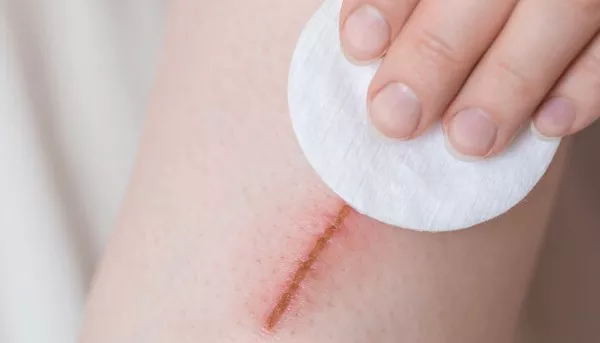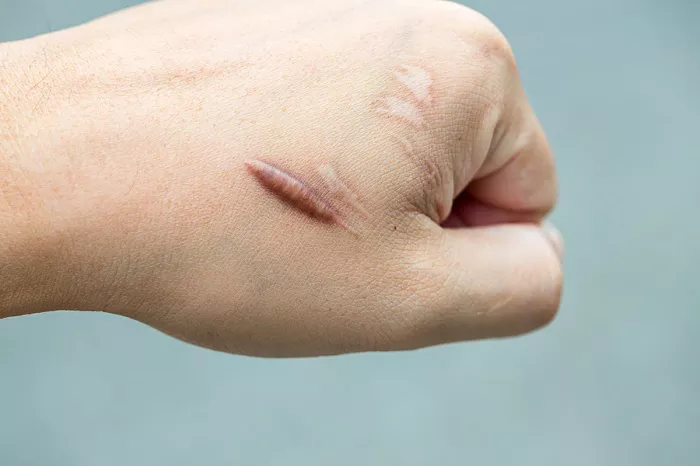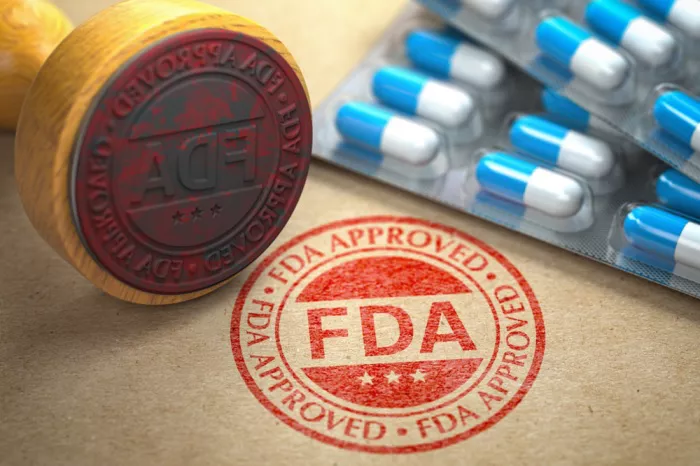Acne marks, often lingering reminders of past breakouts, can be a source of frustration for many individuals striving for clear and radiant skin. In the quest for effective remedies, aloe vera gel has emerged as a popular choice. In this comprehensive guide, we explore the relationship between aloe vera gel and acne marks, delving into its properties, potential benefits, and how to incorporate it into a skincare routine.
Understanding Acne Marks
Before delving into the potential of aloe vera gel, it’s essential to understand what acne marks are and how they differ from other skin blemishes. Acne marks, also known as post-inflammatory hyperpigmentation (PIH) or post-inflammatory erythema (PIE), are the discoloration or redness left behind after an acne lesion has healed. Unlike acne scars, which involve changes in the skin’s texture, acne marks primarily affect skin coloration.
The Healing Properties of Aloe Vera Gel
Aloe vera, a succulent plant with a long history of medicinal use, is renowned for its healing properties. The gel extracted from the aloe vera plant contains a plethora of bioactive compounds, including vitamins, minerals, enzymes, and antioxidants. These compounds contribute to aloe vera gel’s ability to soothe, moisturize, and promote skin regeneration.
Aloe Vera Gel for Soothing Inflammation:
Aloe vera gel is celebrated for its anti-inflammatory properties, making it a popular choice for soothing irritated and inflamed skin. When acne lesions heal, residual inflammation can contribute to the development of acne marks. Applying aloe vera gel may help alleviate inflammation, potentially reducing the intensity of acne marks.
Moisturizing Benefits of Aloe Vera Gel:
Proper hydration is crucial for skin health, and aloe vera gel excels in providing moisture without clogging pores. Well-hydrated skin is more resilient and better equipped to heal, potentially aiding in the reduction of acne marks. The non-greasy nature of aloe vera gel makes it suitable for various skin types, including those prone to acne.
Aloe Vera’s Role in Skin Regeneration:
Aloe vera gel contains compounds that support skin regeneration and repair. The polysaccharides in aloe vera stimulate the production of new skin cells, aiding in the replacement of damaged or discolored skin. This regenerative capacity is a key aspect of how aloe vera gel may contribute to addressing acne marks.
Antioxidant Defense Against Free Radicals:
The antioxidants present in aloe vera gel, including vitamins A, C, and E, play a vital role in neutralizing free radicals. Free radicals can contribute to skin damage and discoloration, potentially worsening the appearance of acne marks. By providing antioxidant protection, aloe vera gel helps safeguard the skin against oxidative stress.
Incorporating Aloe Vera Gel into Your Skincare Routine
Now that we understand the potential benefits of aloe vera gel for acne marks, the next step is to explore how to incorporate it into a skincare routine effectively. A thoughtful and consistent approach ensures optimal results and a positive impact on overall skin health.
Choose Pure Aloe Vera Gel:
Opt for pure and high-quality aloe vera gel to maximize its benefits. Look for products with minimal additives, preservatives, or artificial colors. Alternatively, consider using fresh aloe vera gel directly extracted from the plant for a more natural approach.
Perform a Patch Test:
Before applying aloe vera gel to the entire face, perform a patch test on a small area of skin to check for any adverse reactions. While aloe vera is generally well-tolerated, individual skin sensitivities can vary.
Cleanse Your Face:
Start with a gentle cleanser to remove any impurities or makeup from your face. This prepares the skin to better absorb the beneficial compounds present in aloe vera gel.
Apply Aloe Vera Gel:
Using clean fingertips or a cotton pad, apply a thin layer of aloe vera gel to the affected areas or the entire face, depending on your skincare goals. Gently massage the gel into the skin using circular motions.
Allow Absorption Time:
Allow the aloe vera gel to absorb into the skin before applying additional skincare products. This ensures that the active compounds in the gel have sufficient contact time with the skin.
Follow with Moisturizer:
If desired, follow up with a lightweight, non-comedogenic moisturizer to lock in the hydration provided by the aloe vera gel. This step is particularly important for individuals with dry or combination skin.
Morning and Evening Application:
Consistency is key when using aloe vera gel for acne marks. Consider incorporating it into both your morning and evening skincare routines for optimal results. Always follow with sunscreen in the morning to protect the skin from UV damage.
Understanding the Limitations
While aloe vera gel holds promise in addressing acne marks, it’s important to have realistic expectations and understand its limitations. Aloe vera gel may not completely eliminate all types of discoloration, especially in cases of more severe scarring or deeper pigmentation.
Effectiveness on Recent Acne Marks:
Aloe vera gel may be more effective on recent or mild acne marks. Consistent application over time may help fade these marks, providing a more even skin tone.
Challenging Older or Deeper Marks:
Older or deeper acne marks, particularly those with significant pigmentation, may be more challenging to address solely with aloe vera gel. In such cases, seeking advice from a dermatologist for additional interventions may be necessary.
Patience and Consistency:
Achieving visible results with aloe vera gel requires patience and consistent application. It’s important to understand that the process of skin regeneration and fading of marks takes time.
Combination with Other Treatments:
Individuals with persistent or resistant acne marks may benefit from combining aloe vera gel with other targeted treatments. Dermatological procedures, such as chemical peels or laser therapy, can be considered under professional guidance.
Aloe Vera Gel and Sun Protection
Sun protection is a critical aspect of any skincare routine, especially when addressing acne marks. Exposure to ultraviolet (UV) rays can exacerbate hyperpigmentation and hinder the fading process. Integrating sun protection measures enhances the effectiveness of aloe vera gel in managing acne marks.
Use Sunscreen Daily:
Incorporate a broad-spectrum sunscreen with a high SPF into your daily routine. Apply sunscreen in the morning, even on days when you don’t use aloe vera gel, to shield your skin from UV damage.
Reapply Sunscreen as Needed:
If you spend extended periods outdoors, reapply sunscreen every two hours or more frequently if sweating or swimming. Consistent sun protection contributes to the prevention of further skin damage.
Protective Measures:
In addition to sunscreen, consider protective measures such as wearing a wide-brimmed hat or seeking shade during peak sun hours. These precautions contribute to overall skin health and aid in the management of acne marks.
Addressing Individual Skin Concerns
Every individual’s skin is unique, and factors such as skin type, sensitivity, and the specific characteristics of acne marks vary. Adopting a customized approach ensures that your skincare routine aligns with your skin’s needs and addresses individual concerns effectively.
Adjusting Aloe Vera Gel Concentration:
The concentration of aloe vera gel in skincare products can vary. Individuals with more sensitive skin may opt for formulations with a lower concentration of aloe vera, while those seeking a more potent effect may choose higher concentrations.
Combining with Other Skincare Ingredients:
Aloe vera gel can be combined with other skincare ingredients to create a tailored approach. For example, incorporating vitamin C or niacinamide may complement the brightening effects of aloe vera gel.
Monitoring Skin Reactions:
Pay attention to how your skin responds to the use of aloe vera gel. If you experience any irritation, redness, or discomfort, discontinue use and consult with a dermatologist.
Consulting a Dermatologist:
For individuals with persistent or severe acne marks, consulting a dermatologist is advisable. Dermatologists can provide personalized recommendations, assess the specific characteristics of acne marks, and recommend targeted treatments.
Aloe Vera Gel DIY Recipes for Acne Marks
For those inclined towards a more hands-on approach to skincare, crafting DIY aloe vera gel recipes at home can be an enjoyable and cost-effective way to address acne marks. These simple recipes incorporate readily available ingredients to enhance the benefits of aloe vera gel.
Aloe Vera and Lemon Juice Mask:
Ingredients:
2 tablespoons of aloe vera gel
1 teaspoon of fresh lemon juice
Instructions: Mix the aloe vera gel and fresh lemon juice in a bowl. Apply the mixture to the face, focusing on areas with acne marks. Leave it on for 15 minutes before rinsing with lukewarm water. Lemon juice, known for its natural exfoliating properties, complements the brightening effects of aloe vera gel.
Aloe Vera and Honey Soothing Blend:
Ingredients:
1 tablespoon of aloe vera gel
1 teaspoon of raw honey
Instructions: Combine the aloe vera gel and raw honey in a small bowl. Apply the mixture to the face and leave it on for 20 minutes. Rinse with warm water. Honey’s antibacterial properties and aloe vera’s soothing effects create a synergistic blend for skin health.
Aloe Vera and Turmeric Healing Paste:
Ingredients:
1 tablespoon of aloe vera gel
1/2 teaspoon of turmeric powder
Instructions: Mix the aloe vera gel and turmeric powder to form a paste. Apply the paste to areas with acne marks, avoiding the eye area. Leave it on for 10-15 minutes before rinsing with water. Turmeric, known for its anti-inflammatory properties, complements aloe vera gel in promoting skin healing.
Professional Treatments for Stubborn Acne Marks
While aloe vera gel offers a natural and accessible approach to managing acne marks, some cases may require professional interventions for optimal results. Dermatologists can assess individual skin conditions and recommend targeted treatments tailored to specific concerns.
Chemical Peels:
Chemical peels involve the application of a chemical solution to the skin, exfoliating the outer layer and promoting cell turnover. This procedure can be effective in addressing pigmentation irregularities, including acne marks.
Microdermabrasion:
Microdermabrasion uses a machine to exfoliate the outer layer of the skin, promoting the growth of new, more even-toned skin. It is a non-invasive procedure that can be beneficial for addressing mild to moderate acne marks.
Laser Therapy:
Laser therapy, including fractional laser treatments, can target specific pigmented areas of the skin. This focused approach helps in breaking down pigmentation and promoting a more uniform complexion.
Topical Prescription Medications:
Dermatologists may prescribe topical medications containing ingredients such as retinoids or hydroquinone to address stubborn acne marks. These medications work by promoting skin turnover and inhibiting melanin production.
Microneedling:
Microneedling involves the use of tiny needles to create controlled micro-injuries in the skin. This stimulates collagen production and can be beneficial in improving the appearance of acne marks.
Combining Aloe Vera Gel with Professional Treatments
For individuals seeking comprehensive solutions for stubborn acne marks, combining the benefits of aloe vera gel with professional treatments may offer a synergistic approach. Dermatologists can guide individuals in creating a customized skincare plan that integrates both at-home remedies and professional interventions.
Pre-Treatment with Aloe Vera Gel:
Using aloe vera gel in the weeks leading up to professional treatments can prepare the skin and enhance its receptiveness to the procedures. The soothing and hydrating properties of aloe vera contribute to overall skin health.
Post-Treatment Care with Aloe Vera Gel:
After undergoing professional treatments, incorporating aloe vera gel into post-treatment care can aid in soothing the skin and promoting the healing process. It’s essential to follow dermatologist recommendations for post-treatment care.
Conclusion
In conclusion, the relationship between aloe vera gel and acne marks involves a combination of soothing, moisturizing, and regenerative properties. While aloe vera gel holds promise in addressing recent or mild acne marks, individuals should approach its use with realistic expectations and consistency.
Incorporating aloe vera gel into a well-rounded skincare routine, along with sun protection measures, can contribute to the overall health and appearance of the skin. For persistent or severe acne marks, seeking professional advice ensures a tailored approach that addresses specific concerns and leverages the benefits of both at-home remedies and advanced treatments.
[inline_related_posts title=”You Might Be Interested In” title_align=”left” style=”list” number=”6″ align=”none” ids=”3292,3290,3228″ by=”categories” orderby=”rand” order=”DESC” hide_thumb=”no” thumb_right=”no” views=”no” date=”yes” grid_columns=”2″ post_type=”” tax=””]

































